Winter navigation on Northern Sea Route remains challenging
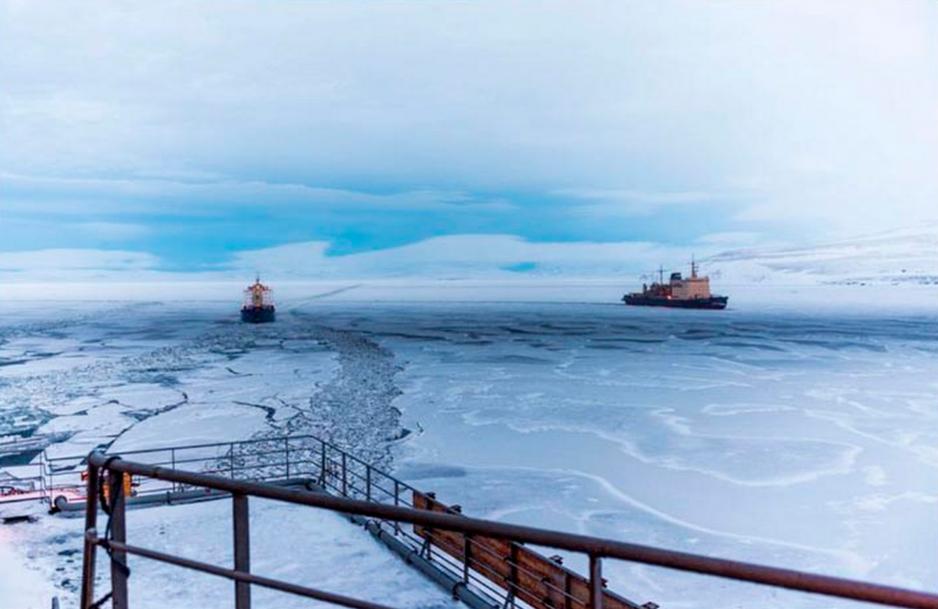
During the months of December and January the Northern Sea Route (NSR) saw two convoys travel along the route. A westbound convoy reached its destination in the Kara Sea without incident.
However, four eastbound vessels remained stuck in thick sea ice in the East Siberian Sea for a week and even after finding a way out of the ice were forced to seek refuge in the port of Pevek for the remainder of the winter.
Winter transits along the NSR, unlike voyages during the summer and fall season, remain exceedingly rare as ice reclaims the Arctic Ocean. The last such voyage occurred nearly 30 years ago before the end of the Soviet Union.
Sea ice still in control of the NSR
The eastbound vessels departed from the port of Arkhangelsk in the White Sea on December 14th and arrived in Pevek in the East Siberian Sea on January 7th, according to The Siberian Times.
The convoy consisted of four ships: the bulk carriers Sinegorsk and Johann Mahmastal together with their icebreaker escort Kapitan Dranitsyn. After the ships encountered severe ice conditions in the Sannikov Strait, a second diesel-electric powered icebreaker Admiral Makarov, was directed to assist in the escort.
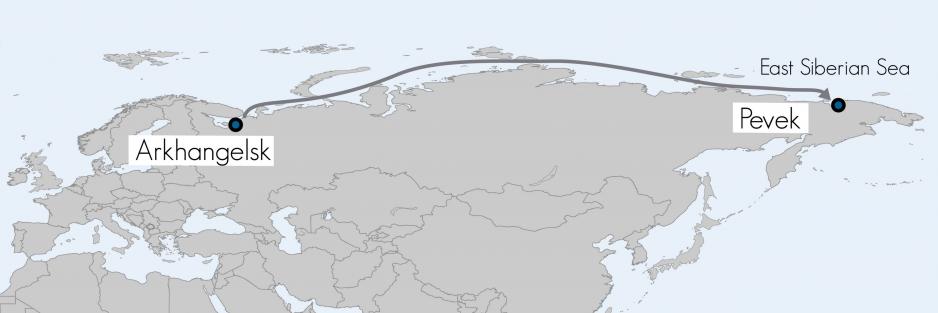
The vessels delivered building supplies for a quay wall part of the world’s first floating nuclear power plant Academician Lomonosov, which will transported to Chukotka for assembly on site in 2018.
Upon leaving port the convoy encountered a sudden buildup of thick compressed ice, up to 1 meter thick with hummocks or ridges up to 2.5 meters tall. The vessels were enclosed by ice around 24 nautical miles north of Pevek at the exit of the Chaunskaya Bay near Cape Shelagsky.
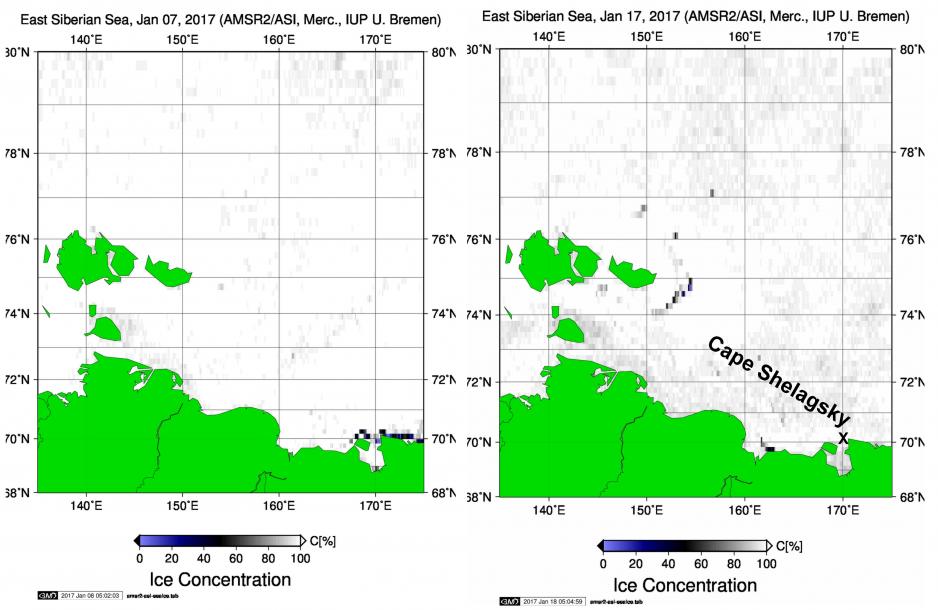
The vessels remained trapped in heavy ice conditions for a week before they were able to break out and return to port in Pevek. The two bulk carriers and the smaller of the two icebreakers, Kapitan Dranitsyn, will remain in port for the remainder of the winter and officials estimate that the ships will begin their return journey at the end of May or June.
The Admiral Makarov, the more powerful of the two icebreakers, departed eastwards to resume its work breaking ice under contract with Rosmorport.
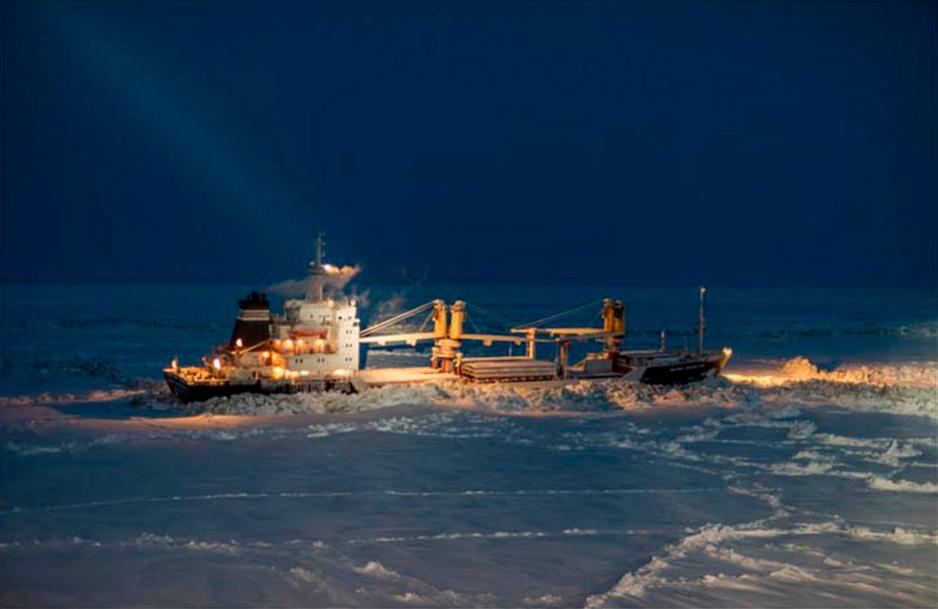
Winter conditions remain unpredictable
The Ministry of Civil Defense, Emergencies and Disaster Relief (EMERCOM) stressed that the unplanned “winter stop” did not represent an emergency situation as crews were well trained and equipped for encountering complex ice situations.
According to Arild Moe, Senior Research Fellow at the Fridtjof Nansen Institute, the voyage was intended to demonstrate the feasibility of journeys in varying ice conditions. However, "it also demonstrated the limitations because of unexpected ice", in part since the two cargo ships were escorted by less capable conventional icebreakers.
Moe suspects that more powerful nuclear icebreakers might have been able to break a path for the Sinegorsk and Johann Mahmastal. "However, this is not only a technical problem, but also a commercial challenge as nuclear icebreaker escorts are more costly and may have not been available."
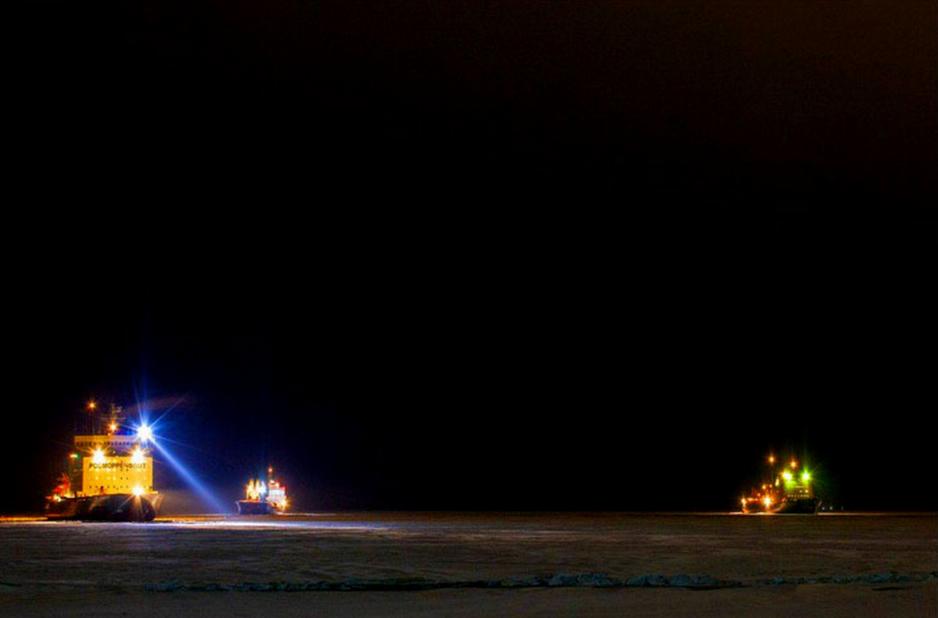
Westbound convoy breaks through ice
Similar to the eastward convoy, four westbound vessels also encountered challenging ice conditions especially in the East Siberian Sea, with highly compressed first year ice with multi-year ice inclusions. But with a capable nuclear-powered icebreaker escort the convoy reached its destination without incident.
The convoy consisted of the shuttle tanker Shturman Ovtsyn, the heavy load carrier Audax and general cargo ship Arktika-1, and their escort icebreaker 50 Let Pobedy. The transit began in the Bering Strait on December 21st and concluded after 2,400 miles in the Gulf of Ob January 3rd.

While Audax and Arktika-1 entered port in Sabatta on the Yamal peninsula, the Ovtsyn proceeded without escort to the Novy Port oil terminal near Cape Kamenny where it arrived January 5th, according to Sovcomflot. This represents the first time a full westbound transit of the NSR was conducted during the months of December or January, according to Russia’s TASS news agency.
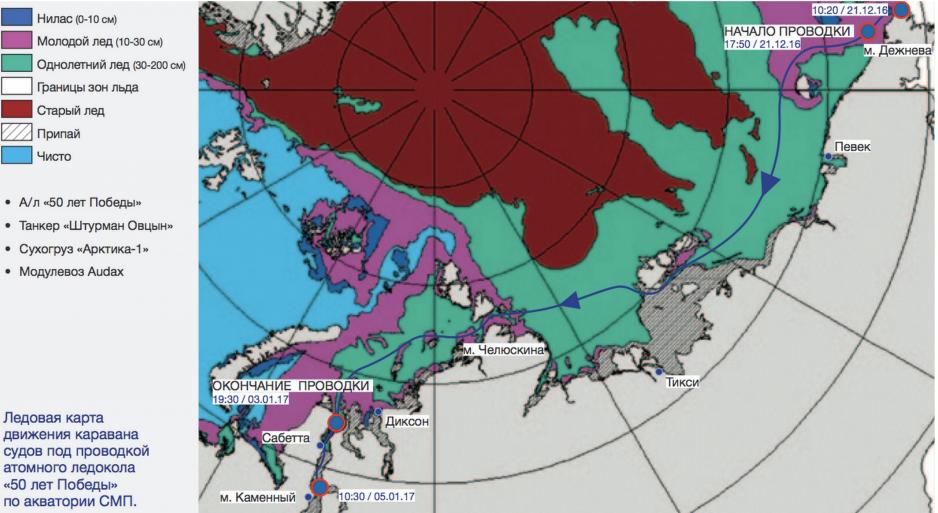
Delivering oil and gas via the NSR year-round
The Shturman Ovtsyn is part of a future fleet of six shuttle tankers operated by Sovcomflot to transport crude oil, produced by Novy Port oil and gas condensate field during year-round operations. The brand new vessel constructed in South Korea left the docks of Samsung Heavy Industries in early December making its way north to the Bering Strait where it joined the convoy for the NSR.
The Ovtsyn is the third shuttle tanker Sovcomflot took delivery of. It was proceeded by the Shturman Albanov in August 2016 and the Shturman Malygin in October 2016. All ships have a deadweight of 41,500 tons, a length of 249 meters, and a breadth of 34 meters.
The tankers are used to transport crude oil from the Arctic Gate terminal, located 3.5 kilometers offshore near Cape Kamenny to the port of Murmansk under a long-term contract with Gazprom Neft. Between August 2016 and the end of January 2017 the vessels completed 33 voyages delivering one million tons of crude oil.
The purpose-built vessels with a Double Acting Tanker design are able to travel through ice up to 1.4 meters thick in normal operations. During more complex ice conditions they are able to operate astern first to break up to 1.8 meters of ice.
While the vessels will take advantage of generally lighter ice conditions in the Kara Sea, compared to the eastern parts of the NSR, they may still depend on icebreakers. Despite the vessels’ Arc7 ice class, “icebreaker assistance and contingencies are integral parts of the gas and oil projects on Yamal and in the Ob Bay”, according to Moe.
Technical capabilities vs. economic considerations
While Russian policy calls for year-round transits on the NSR, Moe cautions that winter transits “all the way along the NSR is still not realistic on a regular basis.”
The primary challenges of winter navigation, however, are not technical capabilities, but commercial and economic considerations. “The cost of providing the sufficient nuclear icebreaker capacity will be high, and I doubt there will be a willingness from users to pay the full cost. At the same time I don't see Russia subsidizing this more than they already do”, Moe explained.
As the incident near Pevek shows, “operations can not be improvised” and highly-capable and expensive-to-operate icebreakers will “remain an integral part”, Moe concluded.
